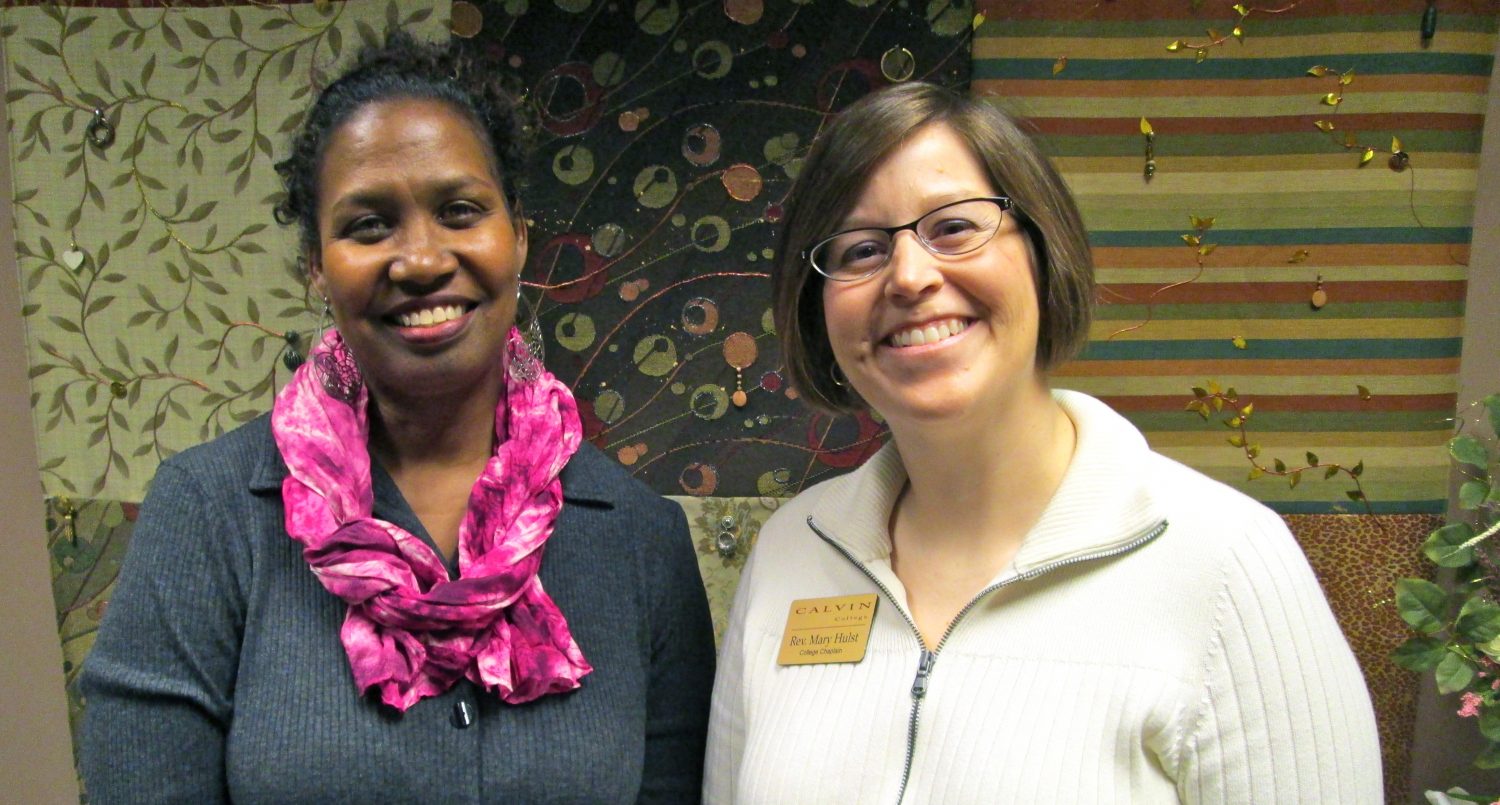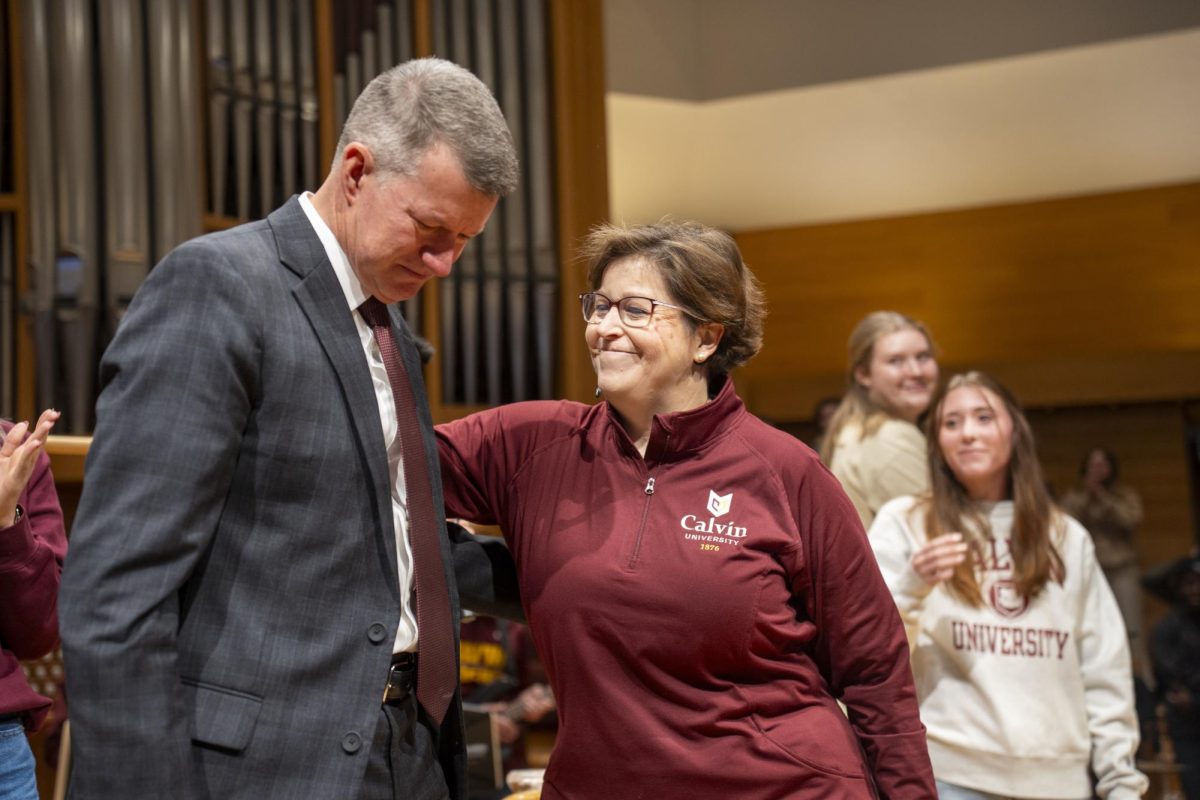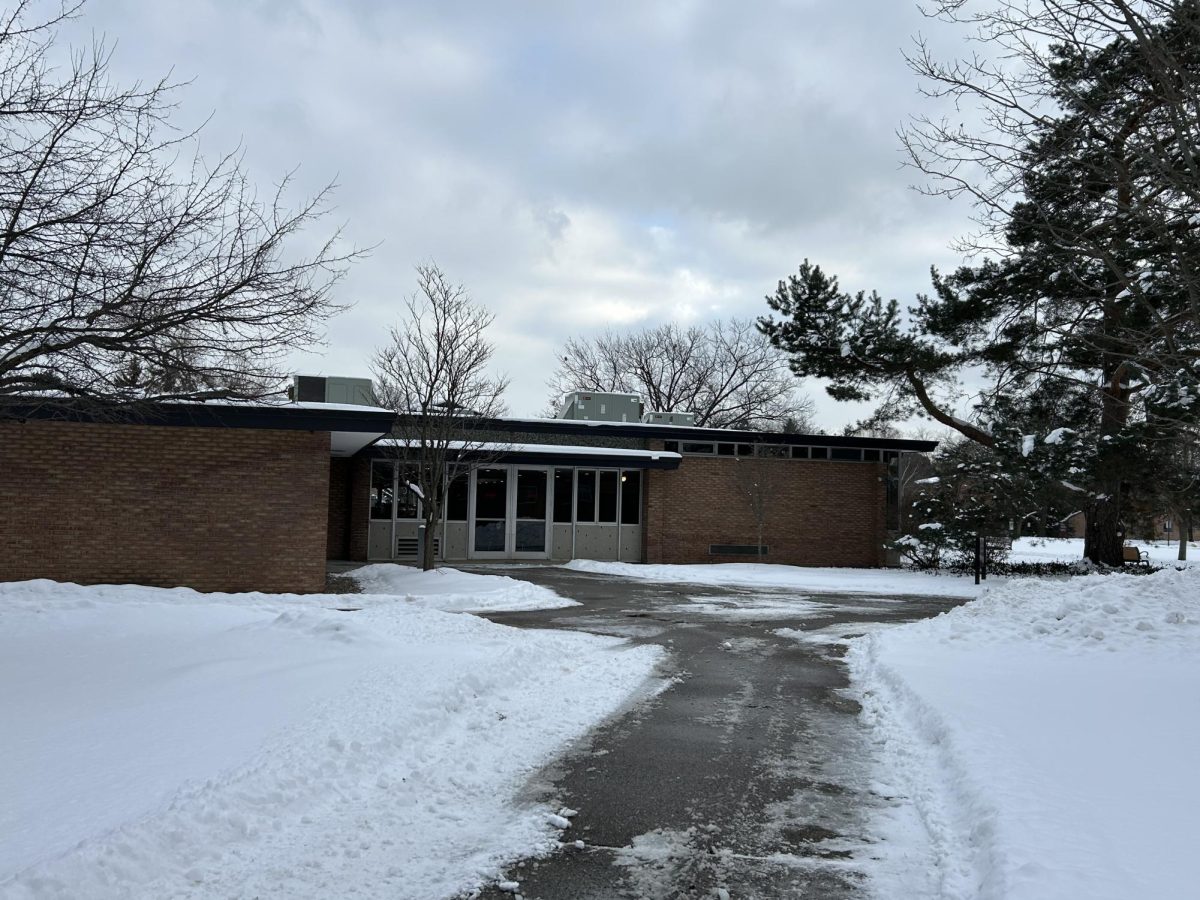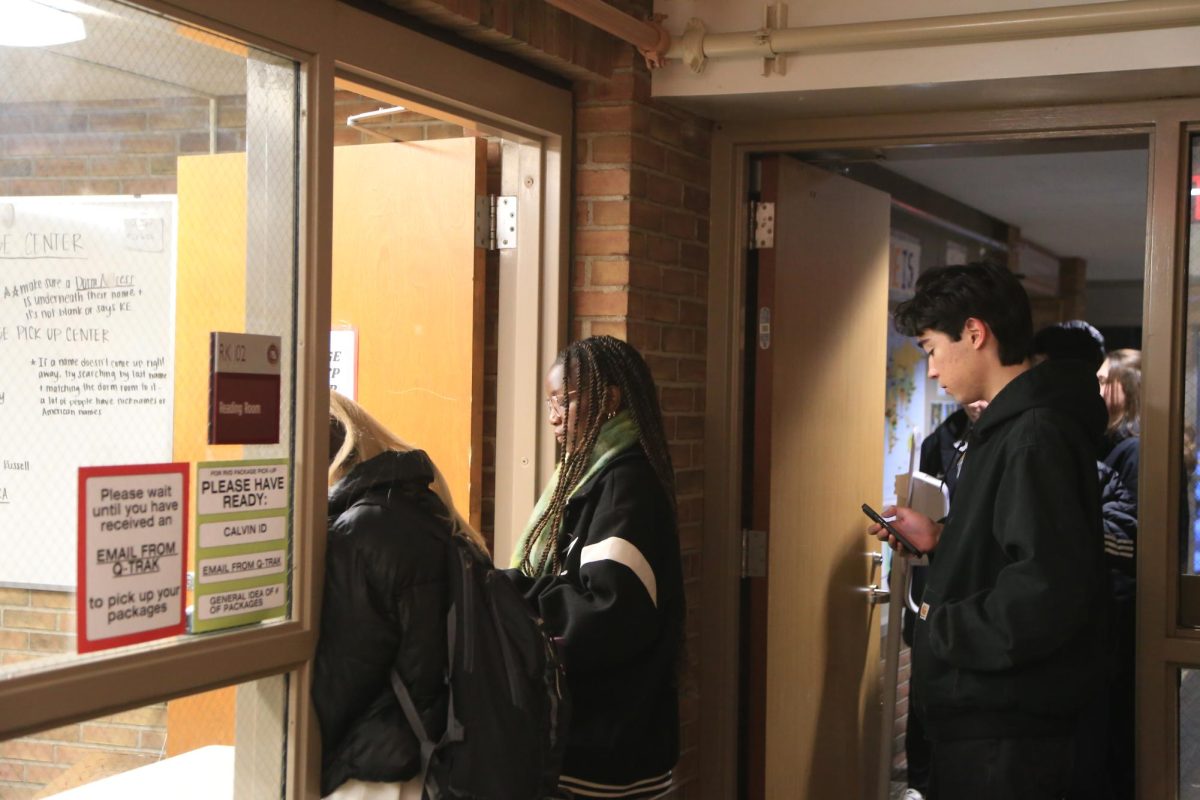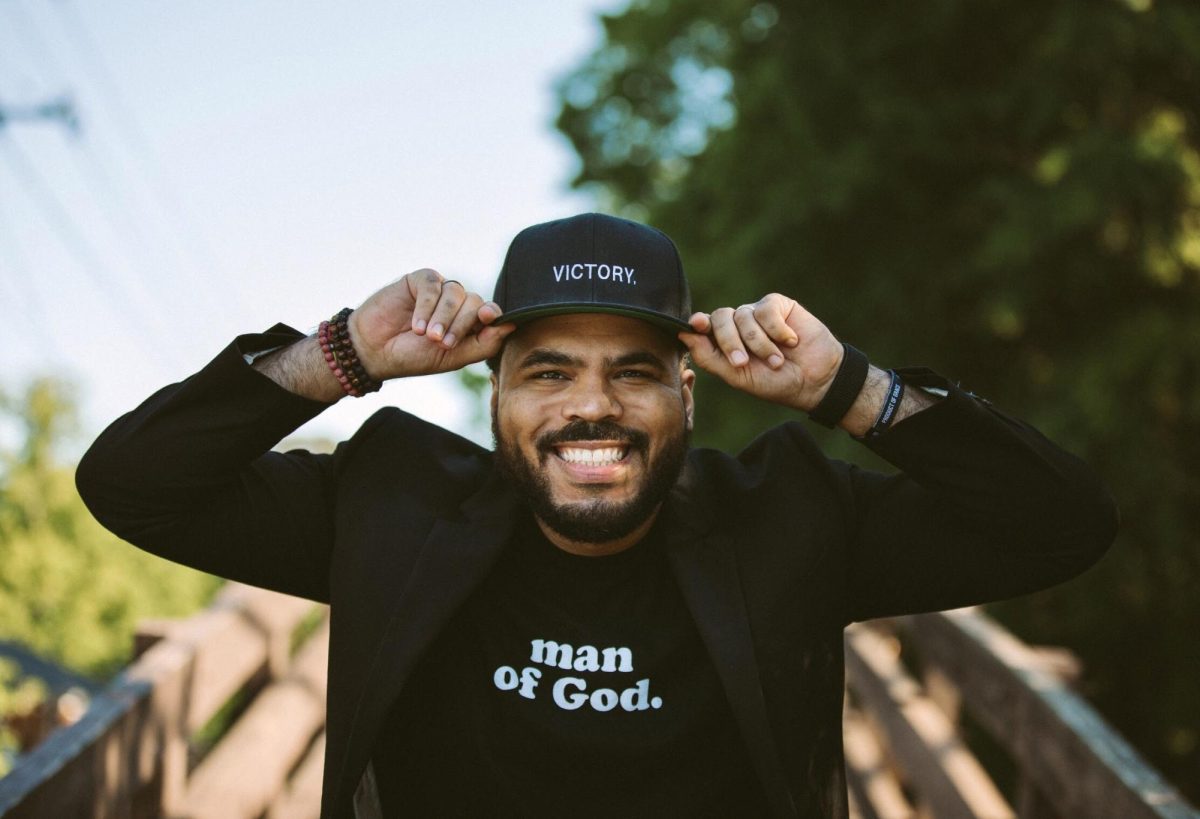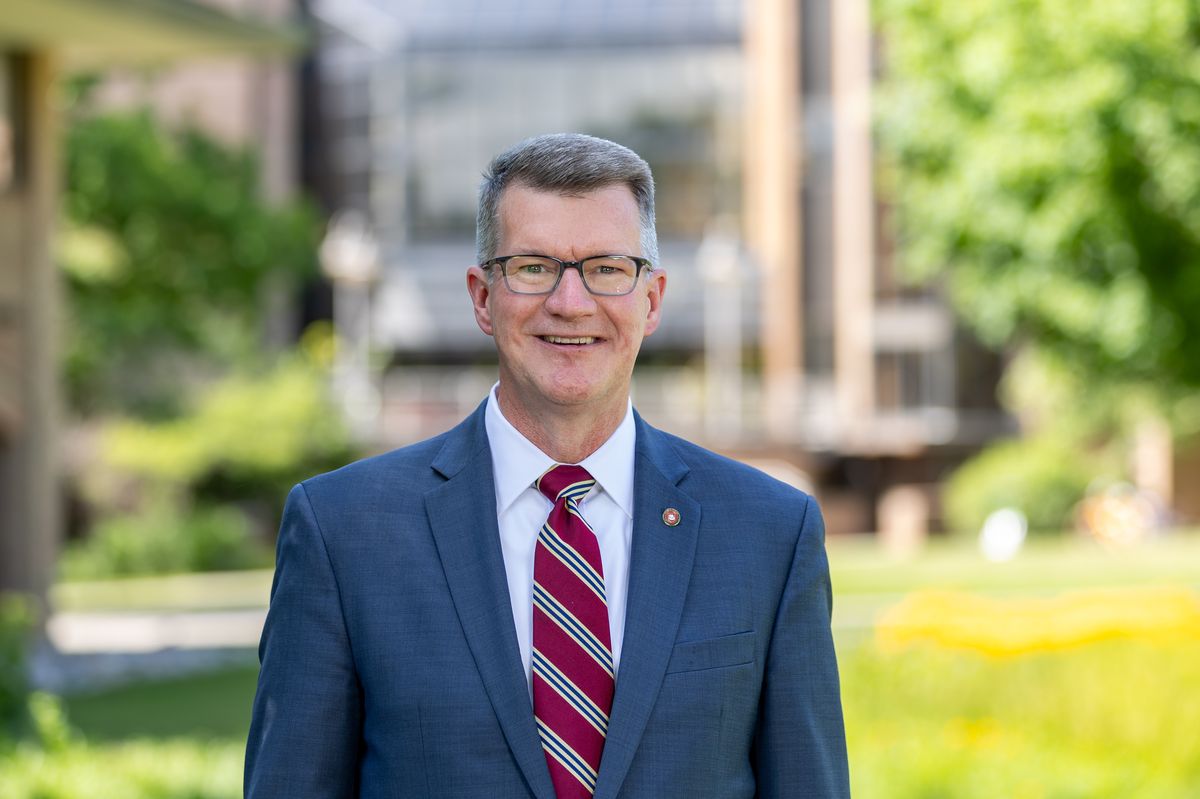At the beginning of the year, President Le Roy expanded his cabinet to include staff additions of chaplain Mary Hulst and Michelle Loyd-Paige, executive associate for diversity, making the first female-majority cabinet in Calvin history.
“I am sure that there is no other Council of Christian Colleges and Universities with this ratio of men and women,” said Shirley Hoogstra, vice president of student life.
The current cabinet consists of Claudia Beversluis, Russell Bloem, Ken Erffmeyer, Shirley Hoogstra, Todd Hubers, Mary Hulst, Doug Koopman, Michelle Loyd-Paige and Sally VanderPloeg.
“It’s great to serve on a cabinet where gifts matter more than gender,” said Hulst. “Each of us serves out of our God-given gifts and passions and encourages the others to do the same. This is what Paul writes about so passionately when he speaks of the body of Christ — ‘having gifts that differ, let’s use them.’ God’s gifts are not handed out based on gender.”
The importance of their areas — campus ministries and diversity — to the college drove Le Roy to appoint these two women to cabinet.
“The cabinet has spent a great deal of time assessing our needs for the future and the college’s current strengths and weaknesses,” said Le Roy in a communication in August. “I believe that we will all make better decisions when we have the benefit of multiple perspectives on an issue.”
Le Roy was not available for further comment.
Le Roy added Hulst, college chaplain, as a member of the cabinet to help integrate the pastoral voice for the campus community and assist Le Roy with matter related to the college’s relationship to the denomination.
“Dr. Le Roy wanted someone who was ordained and well-connected with the CRCNA to serve on cabinet,” said Hulst, “both to help him think well about the connections between school and the broader Christian community and between the school and the CRCNA. Dr. Le Roy is deeply Reformed and is committed to shepherding the college as a Reformed Christian, but he is less familiar with the CRCNA.”
Hulst also brings the benefit of closer connection to the Calvin community.
“He wanted someone to be thinking of the campus as a whole,” she added, “what am I observing, what are the trends, what are people bringing to me as concerns or joys — and use my particular vantage point to speak into the conversations on cabinet. Each of the other VPs has a ‘portfolio,’ that is, a specific area that he or she represents. I am there to speak and listen as the pastor of the campus as a whole.”
Le Roy also appointed Dr. Michelle Loyd-Paige to serve as the executive associate to the president for diversity. Loyd-Paige is the only ethnically-minority member of cabinet.
“My presence brings diversity to the president’s cabinet,” said Loyd-Paige, “just as it has done for every committee I have worked on as I self-identify as an African-American. However, my presence also brings sociological knowledge (my academic home is in the department of sociology and social work), institutional memory (I have been at Calvin for over 25 years) and leadership skills (I have served on key governance committees and served as a department chair).”
Le Roy realized his cabinet’s need when reviewing the composition of the cabinet and the priorities of the college.
“Visits across campus and multiple conversations with students, faculty and staff reveal[ed] that the competency, capacity and composition of our faculty, staff and students must improve if we are to meet our theological commitments articulated in From Every Nation and the practical necessity of preparing graduates for work in a diverse world,” he said in his communication.
One unique facet of Hulst’s new role is that she pastors the cabinet members as well.
“[Dr. Le Roy] also wants me to serve as a pastor to the other VPs,” she said. “When I know their pressures and needs, I can serve them well as counselor and prayer partner.”
Loyd-Paige is also pleased with the new cabinet structure.
“As a graduate of Calvin College and an employee of 25+ years,” she said, “I am pleased to be able to witness structural, demographic and attitudinal changes that favor a more racially and ethnically inclusive campus. The work is by no means complete, but the college is moving in the right direction. I hope that I have had some small part in that movement.”



